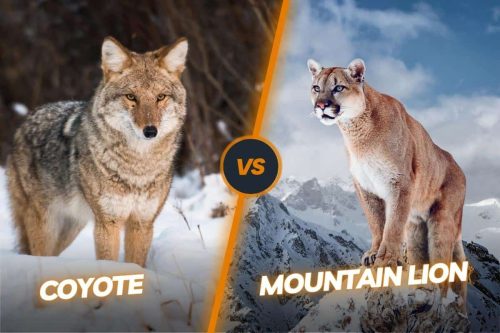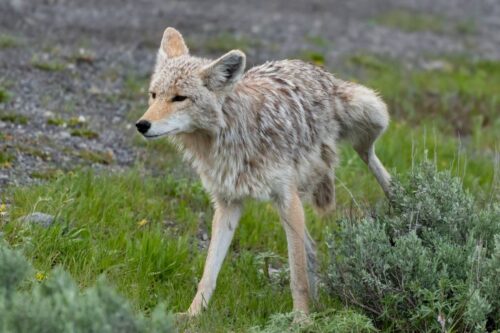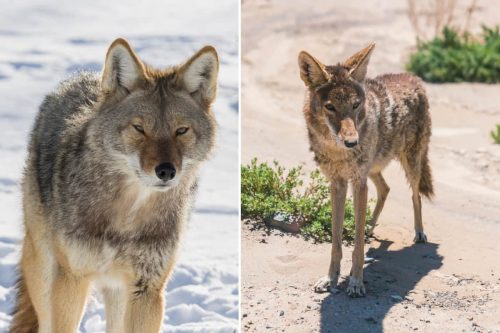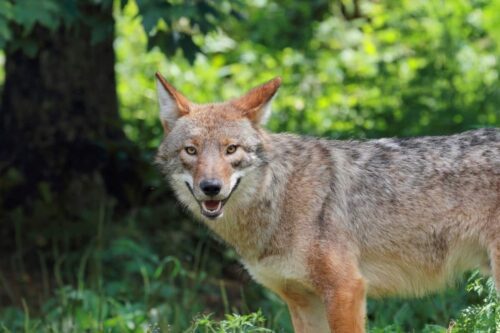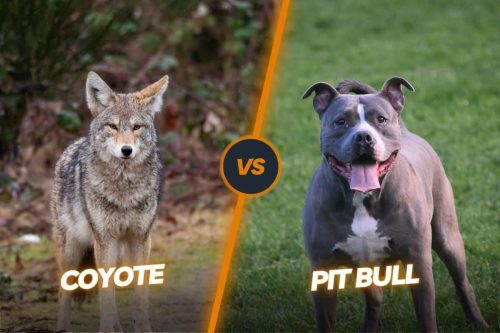Coyote Vs Hyena: Who Would Win In A Fight?
Coyotes and hyenas are very vicious and fearsome predators. They belong to two different families. Coyotes are medium-sized dogs while hyenas have more associations with feline family members. Both are carnivores and live on altogether different continents of the world. Coyote mainly lies in the North American region while the native region of the Hyena is Africa. Both are almost the same in size but there are vast differences in their personality, social behavior, and daily lifestyle. In this comparison of coyote vs hyena, we are going to explore both the similarities and differences between these wild animals.
Important note: There are four different species of the hyena. The largest one is the spotted hyena which comes with black spots throughout its body and the mouth is rounder and broader. In this article, we will focus only on this specie of the hyena.
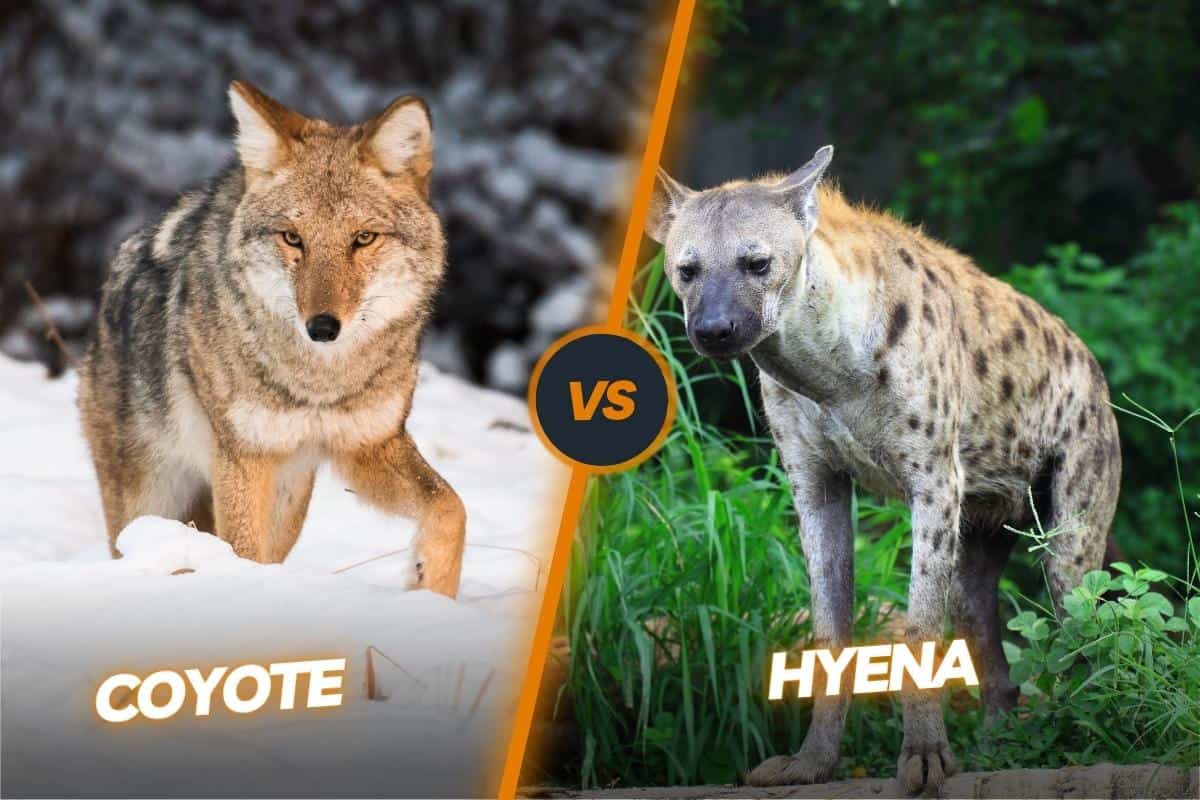
Contents
Brief introduction of hyena
| Kingdom | Animalia |
| Phylum | Chordata |
| Class | Mammalia |
| Order | Carnivore |
| Family | Hyaenidae |
| Genus | Hyaena, crocuta |
A hyena is a carnivorous mammal that belongs to the Hyaenidae family. They are native wild animals of Africa and some parts of Asia. Hyenas have a distinctive appearance, robust build, a sloping back, and front legs that are longer than their hind legs. They have powerful jaws and large teeth which are perfect for crushing bones.
There are four species of hyenas: the spotted hyena, the brown hyena, the striped hyena, and the aardwolf. Among these, the spotted hyena is the largest and most well-known species. Hyenas are known for their unique social structure and complex behaviors. They are highly intelligent and exhibit a wide range of vocalizations, including distinctive calls that can sound like laughter, that’s why these are also known as “laughing hyenas.” They live in social groups called clans, which can consist of up to 80 individuals.
Hyenas are primarily scavengers and have strong jaws that allow them to break open bones to access the nutritious marrow inside. However, they are also skilled hunters and can take down large prey, including wildebeests and zebras, especially if they work together in coordinated groups.
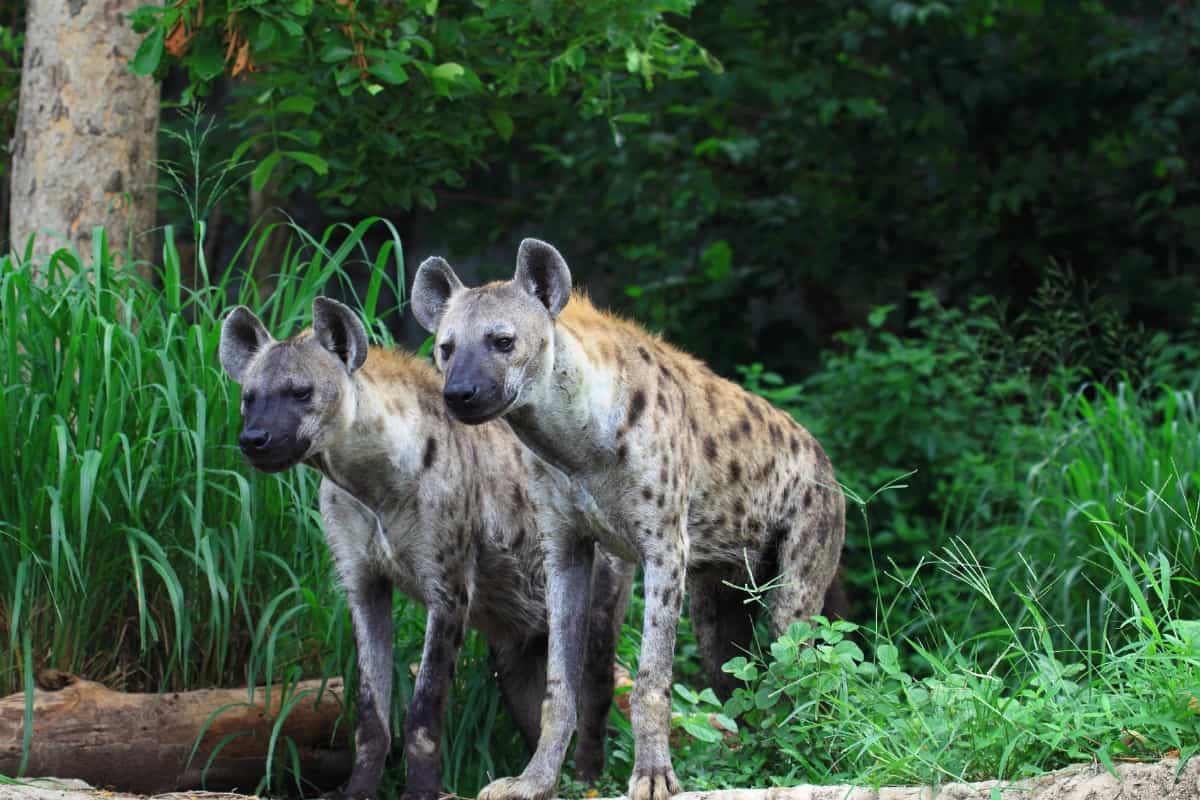
Brief introduction of coyote
| Kingdom | Animalia |
| Phylum | Chordata |
| Class | Mammalia |
| Order | Carnivore |
| Family | Canidae |
| Genus | Canis |
A coyote is a species of the Canidae family. They are native to North and Central America and are closely related to other canids such as wolves, foxes, and domestic dogs. Coyotes have a wide geographical distribution and can be found in a variety of habitats including forests, grasslands, deserts, and urban areas. Coyotes have a similar appearance to a small-sized wolf, with a slender build, a bushy tail, and a pointed snout. They have reddish-brown or grayish-brown fur, which may vary depending on their geographical location.
Coyotes are typically solitary animals, although they may form small family groups consisting of a breeding pair and their offspring. They communicate through a range of vocalizations, including howls, yips, barks, and growls. In recent years, coyotes have also become increasingly adaptable to urban environments and can be found in suburban areas and even large cities.
Do coyotes and hyenas belong to the same family?
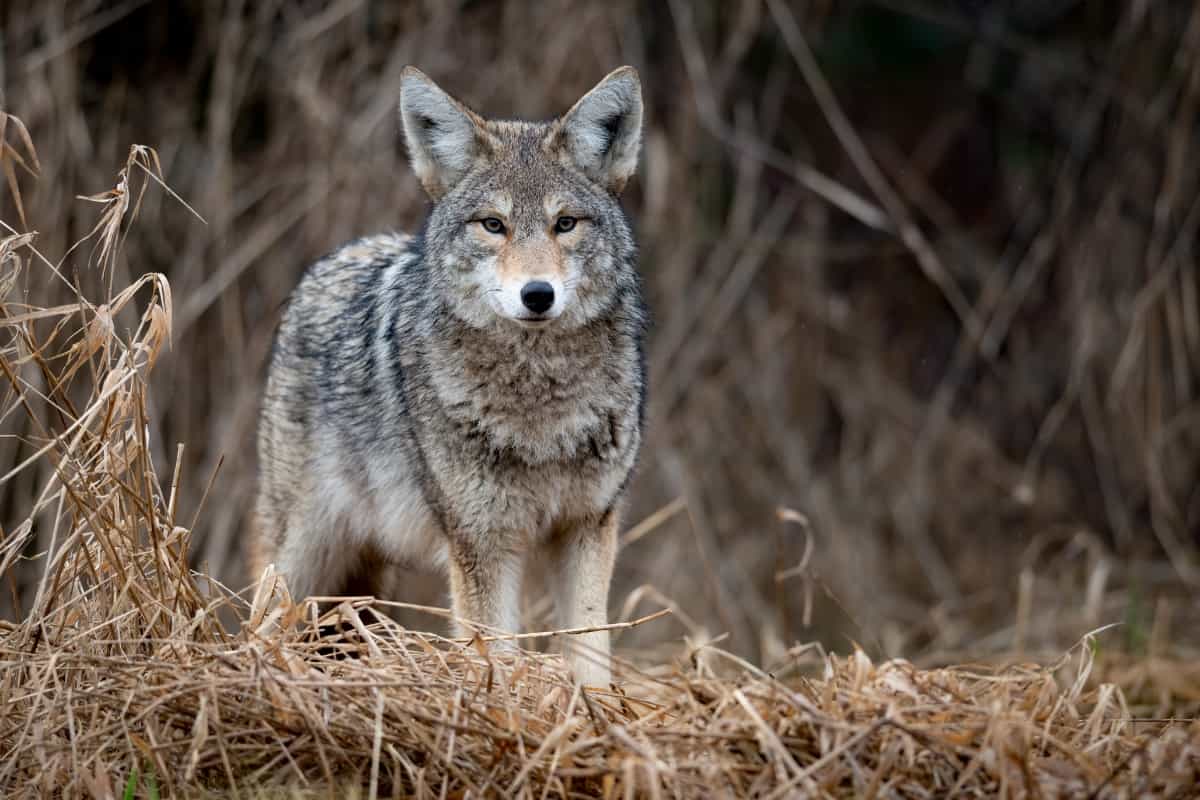
No, coyotes and hyenas do not belong to the same family. Coyotes belong to the Canidae family, which consists of canids such as wolves, foxes, and domestic dogs while Hyenas belong to the Hyaenidae family, which is a separate family that consists of hyenas and aardwolves.
While coyotes and hyenas share some similarities in terms of being carnivorous mammals, they have distinct evolutionary lineages and belong to different taxonomic families. Coyotes are native to North and Central America, while hyenas are found in Africa and parts of Asia. They also have different physical characteristics and behaviors.
Comparing Coyote vs hyena
Let’s have a deeper look at the main differences between these two wild animals.
| Characteristics | Hyena | Coyote |
|---|---|---|
| Size | Weight: 90-150 pounds Length: 3.6-5.9 feet Height: 2.3-3.3 feet | Weight: 20-50 pounds Length: 3-4 feet Height: 1-2 feet |
| Habitat | Savanna, woodlands, grasslands, deserts, mountains. | Deserts, forests, mountains, prairies, urban areas. |
| Geographical range | Sub-Saharan Africa. | North America. |
| Diet | Large ungulates such as wildebeest, zebras, and antelopes. | Small mammals like rodents, rabbits, and squirrels. They also consume birds, reptiles, amphibians, insects, fruits, berries, and occasionally carrion. |
| Bite force | 1000 PSI | 88 to 100 PSI |
| Speed | 37 mph | 35-43 mph |
| Coat color | large, irregular brown spots or blotches on a light sandy or grayish background. | A mixture of gray, brown, and buff tones. |
| Sounds | high-pitched cackling or whooping sounds, growls, grunts, roars, and whines. | Howl, yips, barks, growls, and whines. |
Size: coyote vs hyena
When it comes to size, hyenas, especially the spotted hyena, are generally larger and heavier than coyotes. Adult coyotes typically weigh between 20 to 50 pounds. They measure around 3 to 4 feet in length, excluding the tail. Coyotes stand about 1 to 2 feet tall at the shoulder.
On the other hand, the weight of hyenas varies depending on the species. In the case of spotted hyena, Adult males weigh around 90 to 150 pounds, while adult females weigh between 80 to 110 pounds. Hyenas measure approximately 3.6 to 5.9 feet in length, excluding the tail. They stand about 2.3 to 3.3 feet tall at the shoulder.
Habitat & geographical distribution: Hyena vs Coyote
Hyenas and coyotes have altogether different habitats and geographical distributions. Hyenas are primarily found in sub-Saharan Africa, ranging from savannas and grasslands to woodlands and mountainous regions. They have a wide distribution across countries like Kenya, Tanzania, Botswana, Zimbabwe, and South Africa.
On the other hand, coyotes are native to North and Central America and have a wide distribution across the continent. They can be found in diverse habitats, including forests, grasslands, deserts, mountains, and urban areas. Coyotes are adaptable and have successfully colonized various regions, including parts of the United States, Canada, Mexico, and Central America.
Diet: Coyotes vs Hyenas
They also vary a lot in terms of their dietary preferences and feeding habits. Hyenas are highly versatile and opportunistic carnivores. Their diet primarily consists of large ungulates such as wildebeest, zebras, and antelopes. They are also known to feed on carcasses, including those of larger predators’ kills. Spotted hyenas have incredibly strong jaws and are capable of consuming bones, providing them with additional nutrients.
Coyotes are opportunistic and adaptable feeders with an omnivorous diet. The diet consists of a wide range of food sources, including small mammals like rodents, rabbits, and squirrels. They also consume birds, reptiles, amphibians, insects, fruits, berries, and occasionally carrion. In urban areas, they may scavenge from human garbage and consume domestic animals like small pets.
Bite force: Hyenas vs coyotes

If we compare the bite power of hyenas and coyotes, hyenas generally have a stronger bite force than coyotes due to the anatomical adaptations of hyenas’ skulls and jaws. Hyenas possess one of the most powerful bite forces among mammals. The skull structure and jaw muscles are adapted for both bone-crushing and shearing. The bite force of a spotted hyena is estimated to be around 1,000 pounds per square inch (psi), allowing them to easily break through bones and crush hard prey items.
Coyotes have a relatively strong bite force for their size but are not as powerful as hyenas. The exact bite force of a coyote is more challenging to determine accurately, but estimates suggest it is around 88 to 100 psi. While they are skilled predators, their bite force is not specialized for bone-crushing like that of hyenas.
Speed
When it comes to speed, coyotes are generally faster than hyenas. Hyenas are not known for their exceptional speed. The body structure of the hyena is more adapted for endurance and stamina rather than outright speed. They can sustain a trotting pace for long distances and have been recorded running at speeds of up to 37 mph for short bursts.
On the other hand, Coyotes are known for their agility and speed. They are adept runners and can reach impressive speeds while chasing prey or evading danger. Coyotes have been reported to reach speeds of up to 35-43 mph. They have long legs and a slender body structure that contributes to their speed and agility.
Coat color
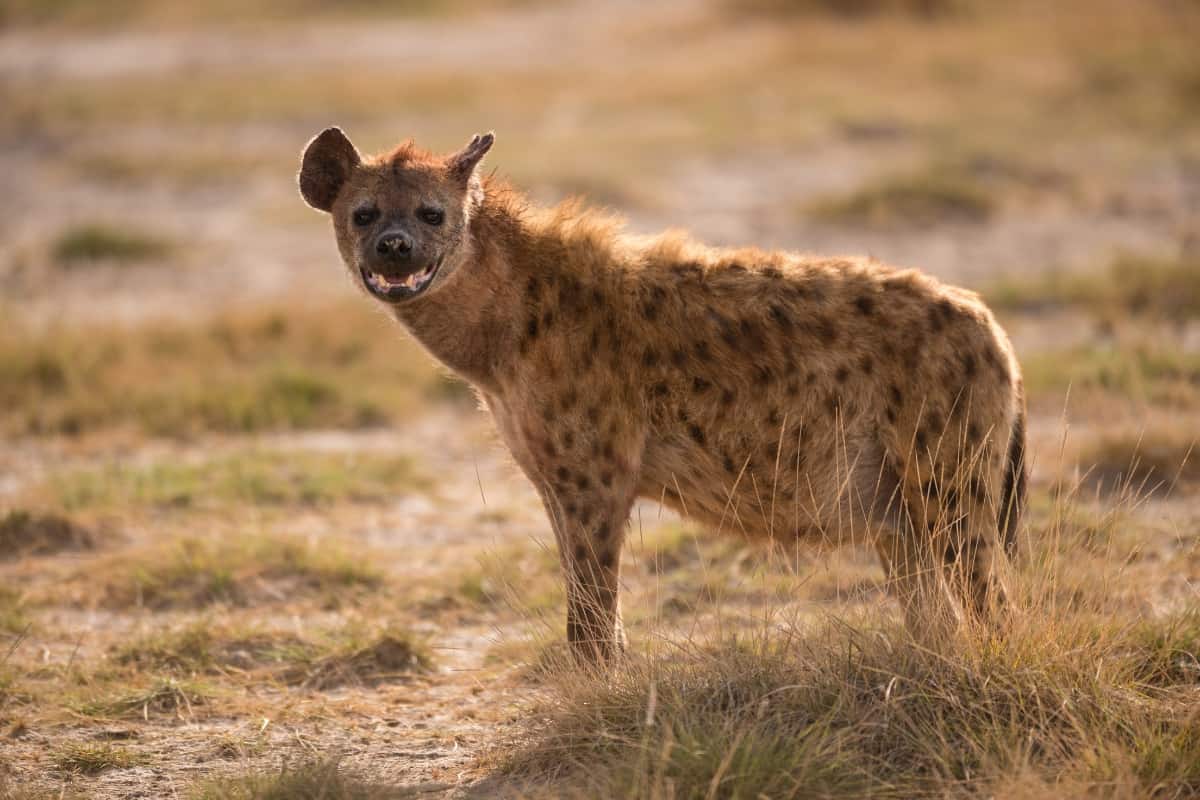
Hyenas and coyotes have distinct coat colors that help them blend into their respective environments. Hyenas have a unique coat pattern characterized by large, irregular brown spots or blotches on a light sandy or grayish background. The spots are more prominent on the upper body and fade towards the legs and belly. This coloration provides effective camouflage in the grasslands and savannas where spotted hyenas are commonly found.
Coyotes exhibit a range of coat colors depending on their geographical location and subspecies. Generally, the fur is a mixture of gray, brown, and buff tones. The specific coloration can vary from region to region, with some coyotes displaying reddish or blackish hues as well. This color variation allows them to blend into diverse habitats such as forests, deserts, and grasslands.
Senses
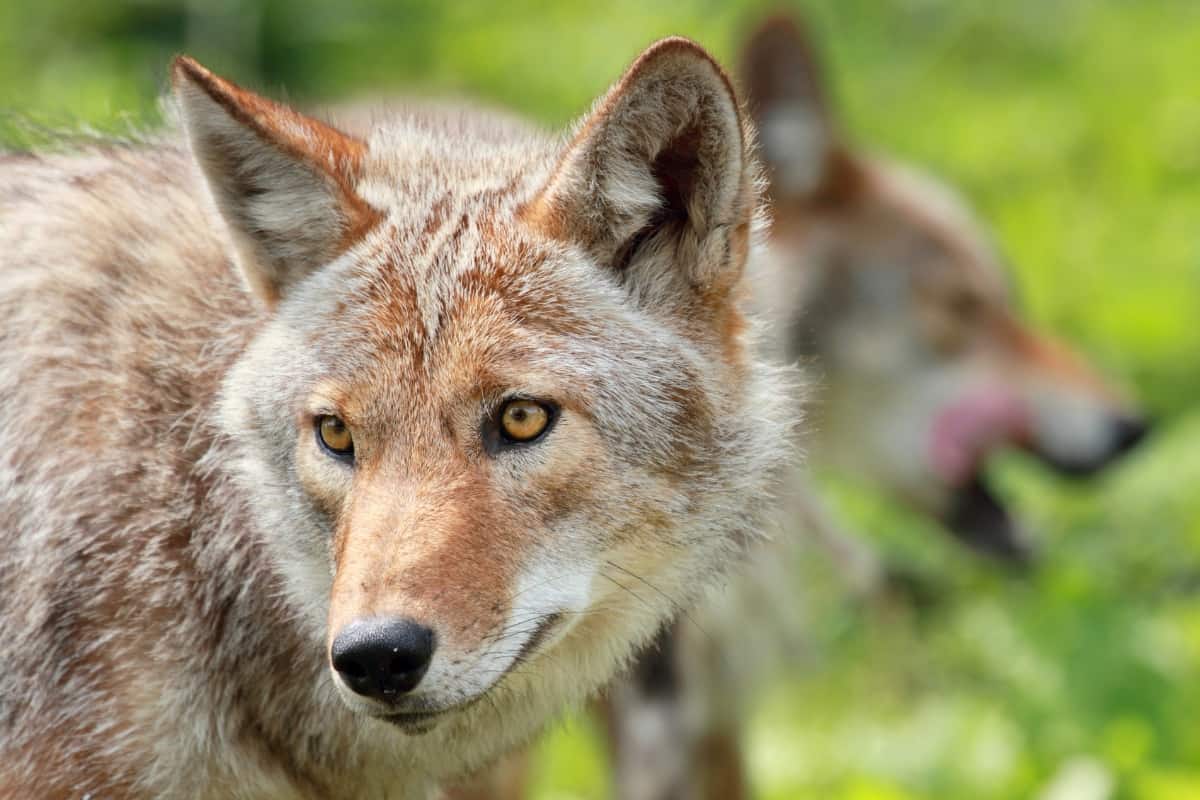
Both of them have different sensory capabilities that are excellent for their survival and hunting strategies. Hyenas have relatively good eyesight, allowing them to locate prey and assess potential threats from a distance. Hyenas also have highly acute hearing. They come with large but mobile ears that can swivel independently and pinpoint the source of sounds. Moreover, Hyenas are also known for a well-developed sense of smell, which plays a crucial role in identifying food sources.
On the other hand, Coyotes come with excellent vision, especially good for low-light conditions. The visual acuity helps them locate prey and navigate their habitat effectively. Coyotes also possess acute hearing senses. They can hear a wide range of frequencies. Coyotes use their sense of hearing to locate prey, communicate with pack members, and detect potential threats. Coyotes have an exceptional sense of smell. They have long snouts which enable them to detect and discriminate scents with great accuracy. They use their sense of smell to locate prey and communicate through scent marking.
Are coyotes nocturnal? Find out here.
Sounds
Hyenas and coyotes have distinct vocalizations and they communicate by using these different kinds of sounds. Hyenas are known for their variety of sounds. The most characteristic vocalization is their “laugh,” often described as a high-pitched cackling or whooping sound. Spotted hyenas use this vocalization to communicate with clan members, establish dominance, and coordinate group activities. They also produce other vocalizations such as growls, grunts, roars, and whines.
On the other hand, Coyotes are highly vocal animals and have an extensive range of vocalizations. One of their most well-known vocalizations is the howl, which is a distinctive long, mournful sound. Howling is used for communication between individuals, maintaining contact with pack members, and marking territory. Coyotes also produce a variety of other sounds, including yips, barks, growls, and whines, which serve different communicative purposes.
Paws
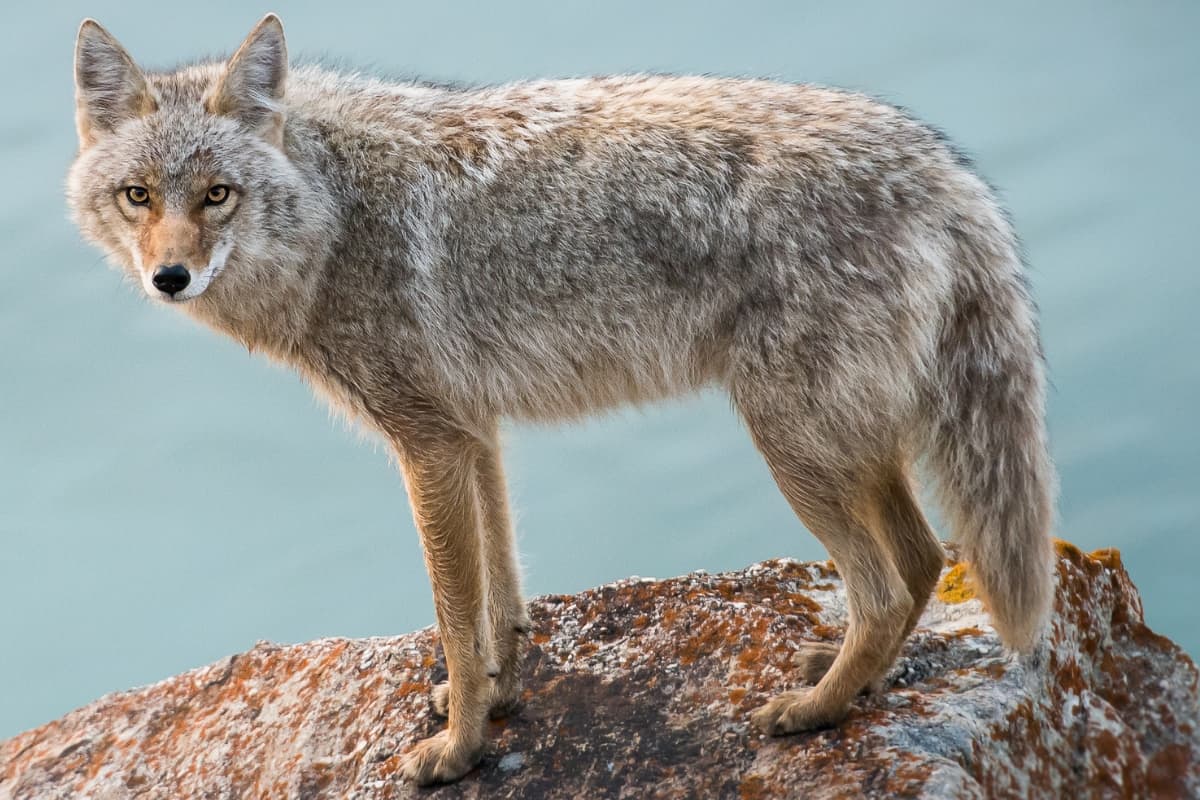
Hyenas and coyotes have distinct paws that are according to their daily lifestyles and environments. Hyenas come with large, robust paws having non-retractable claws. The hyena’s front paws are slightly larger than the hind paws, which helps in stability and support during running. They have thick foot pads which help in providing cushioning and help absorb shock during their powerful strides. These adaptations enable hyenas to cover vast distances in search of food in their expansive habitats.
On the other hand, Coyotes have relatively smaller and compact paws. Coyote paws are designed for agility and quick movements. They have sharp, retractable claws that can be extended when needed for hunting or digging. Coyotes’ foot pads are less developed than those of hyenas, but they still provide some protection and traction. Coyotes are adept at navigating various terrains, including forests, grasslands, and urban areas.
Hyena vs Coyote: who would be the ultimate winner of the fight?
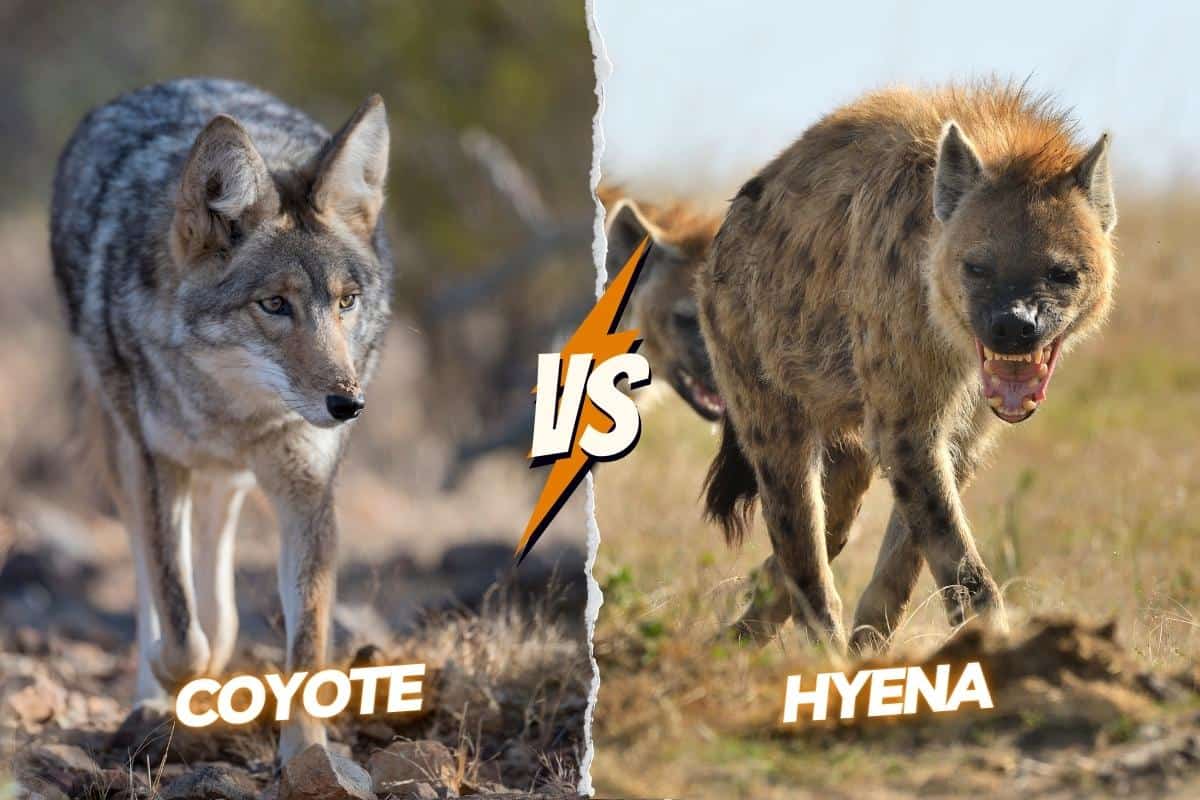
It is worth noting that hyenas and coyotes are not natural competitors of each other in the wild, as they inhabit different regions and have distinct ecological roles. However, for the sake of speculation, hyenas would win this fight. Hyenas have an advantage in terms of size and strength. They are big and more robust than coyotes. They have a more powerful bite force and stronger body muscles. Coyotes are also known for their agility. They can evade threats. Their agility and quick movements could provide them an advantage in terms of evasion and maneuverability during a fight. But hyenas could also chase them down and if they are successful in doing it then there will be no chance of survival for the coyote.
Conclusion
In the comparison of the coyote vs hyena, we have concluded that they may seem similar in some aspects, such as their carnivorous diet and social behavior but they possess distinct characteristics. Hyenas, with their powerful body muscles and bone-crushing jaws, dominate the African savannas. On the other hand, coyotes exemplify adaptability and versatility. They have extraordinary agility which allows them to thrive in various environments, from forests to deserts and even urban areas.

Izzy is an experienced ranch worker who has a passion for exploring nature and getting up close to wildlife. With her connections to various animal organizations, Izzy is well-versed in animal care and rehabilitation.



